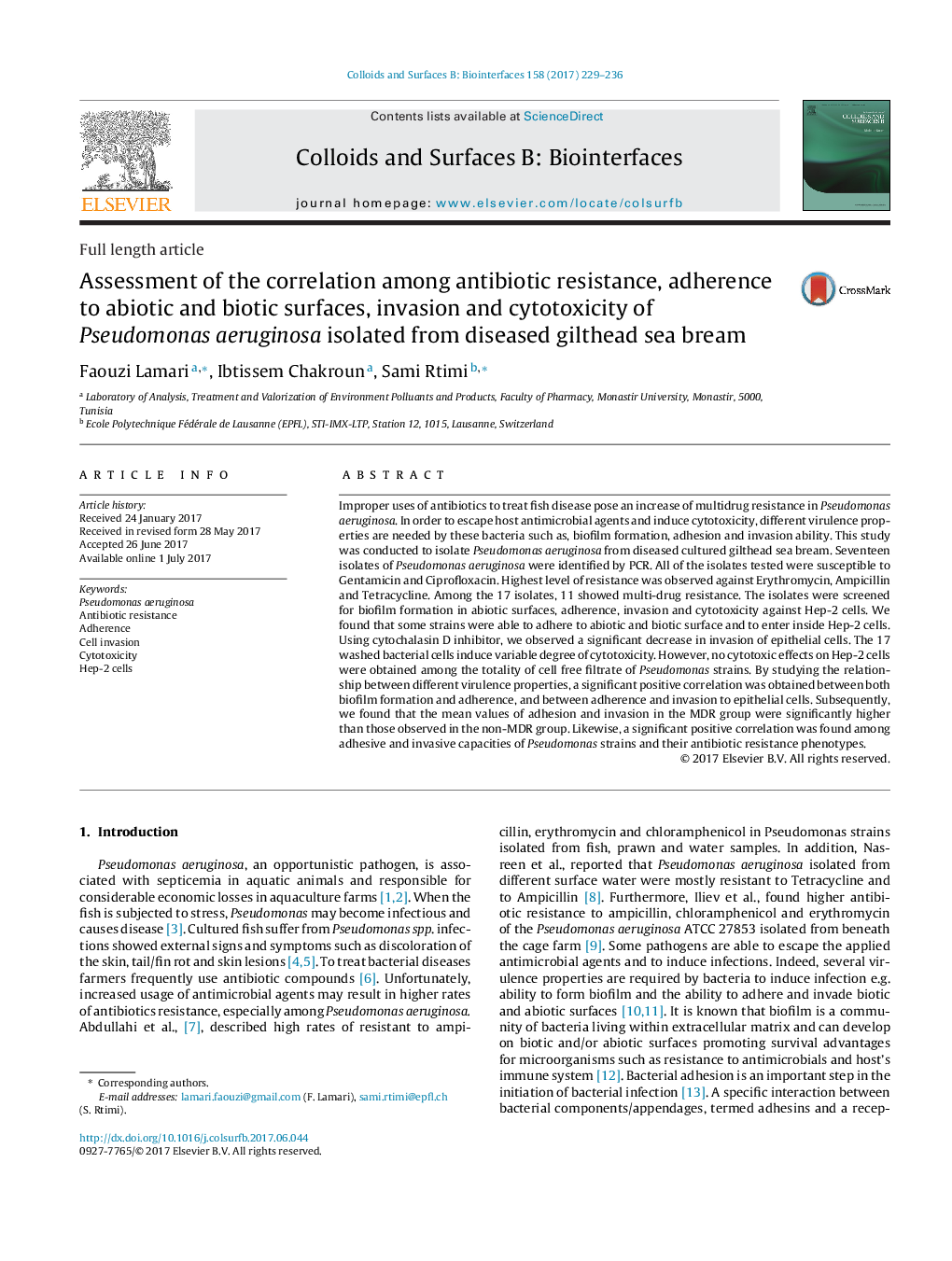| کد مقاله | کد نشریه | سال انتشار | مقاله انگلیسی | نسخه تمام متن |
|---|---|---|---|---|
| 4982809 | 1454246 | 2017 | 8 صفحه PDF | دانلود رایگان |
- Pseudomonas aeruginosa were isolated from diseased fish.
- Isolates showed virulence properties e.g. adherence, invasion and cytotoxicity.
- Strong correlation was seen between adherence to Hep-2 cells and biofilm formation.
- Positive correlation was seen between adherence and invasion to epithelial cells.
- Multi-drug resistant pathogens showed higher mean of virulence than non-MDR.
Improper uses of antibiotics to treat fish disease pose an increase of multidrug resistance in Pseudomonas aeruginosa. In order to escape host antimicrobial agents and induce cytotoxicity, different virulence properties are needed by these bacteria such as, biofilm formation, adhesion and invasion ability. This study was conducted to isolate Pseudomonas aeruginosa from diseased cultured gilthead sea bream. Seventeen isolates of Pseudomonas aeruginosa were identified by PCR. All of the isolates tested were susceptible to Gentamicin and Ciprofloxacin. Highest level of resistance was observed against Erythromycin, Ampicillin and Tetracycline. Among the 17 isolates, 11 showed multi-drug resistance. The isolates were screened for biofilm formation in abiotic surfaces, adherence, invasion and cytotoxicity against Hep-2 cells. We found that some strains were able to adhere to abiotic and biotic surface and to enter inside Hep-2 cells. Using cytochalasin D inhibitor, we observed a significant decrease in invasion of epithelial cells. The 17 washed bacterial cells induce variable degree of cytotoxicity. However, no cytotoxic effects on Hep-2 cells were obtained among the totality of cell free filtrate of Pseudomonas strains. By studying the relationship between different virulence properties, a significant positive correlation was obtained between both biofilm formation and adherence, and between adherence and invasion to epithelial cells. Subsequently, we found that the mean values of adhesion and invasion in the MDR group were significantly higher than those observed in the non-MDR group. Likewise, a significant positive correlation was found among adhesive and invasive capacities of Pseudomonas strains and their antibiotic resistance phenotypes.
359
Journal: Colloids and Surfaces B: Biointerfaces - Volume 158, 1 October 2017, Pages 229-236
